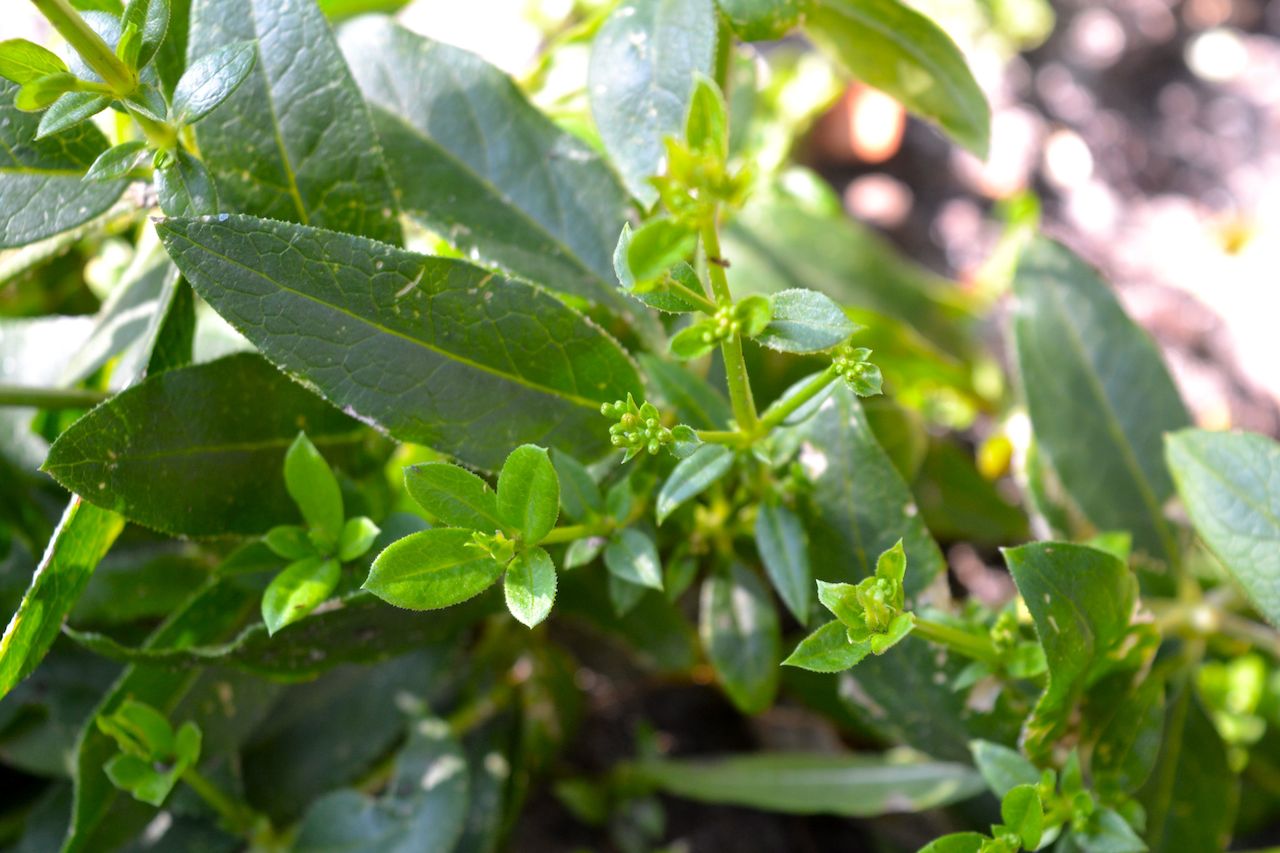July is usually the main season for both wild and cultivated dye plants. This year, the extremely hot and dry summer has been challenging for many plants.

In early June, we moved into our large, new house. There’s plenty of room for my dye workshop (and the rest of the family), but the garden is maybe the best part – almost 2000 m2.
That’s why the blog has been rather quiet. I’ve simply been in the garden, laying out my glorious and huge dye garden.
And the beginning of it is shaping up already. Here, dyer’s copeopsis (Coreopsis tinctoria) in full bloom. I imagine its relatives growing all around the world, I’ve certainly shipped many coreopsis seeds this spring.

Next to the coreopsis there’s these three: On the left, safflower (Carthamus tinctorius), in the middle, dyer’s chamomile (Anthemis tinctoria), and on the right, an old favorite, woad. And yes, its leaves are rather lacy-looking, thanks to the massive attack of white butterflies were’s under.

I’ve spent a fair amount of time wondering why the white butterflies are also eating my weld, since it is not a member of the cabbage family. The attack is not as massive as the one on the woad (and my poor bok choi), but they do have a taste for weld. A quick search showed that weld actually belongs to the order Brassicales. So both the cabbage family (where we find cabbage and woad) and the reseda family (where we find weld, Reseda luteola) belong to the Brassicales order. And members of this order can all be attacked by members of the family where we find the white cabbage butterflies. I’m happy I managed to explain that to myself!

Japanese indigo is one of the main dye plants in my garden again this year. I’ve never seen attacks by any pests, but the plant has had a difficult time in our dry, sandy soil. I lost a few plants in the unusual heat:

So at that point, we started watering more diligently, and a month later, the Japanese indigo is doing fine, and the plants have normal size for the time of year:

But I had a rather low number of plants, so I decided to try propagating the Japanese indigo by cuttings. I cut some stems of 10-12 cm (4-5 inches) with several pairs of leaves on them, and several nodes. Looking at the stems closely, it’s easy to see little bumps under each node, which are the zones where new roots can quickly grow.

I left the cuttings in water for 6 days, and that was enough for them to form good bundles of roots:

I’ve been growing madder for some years, too. This year, I have this special plant (propagated from the one in my sister’s garden) which is just at the end of flowering. I’ve read (don’t remember where, of course) that madder never flowers in Northern Europe, so the unassuming white flowers were a very good surprise. Now, I’m keeping an eye on the plant, so see if it might even form seeds?

And, the very last plant: A Hopi sunflower, wondering when to flower. The flowers and seeds are supposedly red, and contain a red dye.

[…] the leaves off. I put the empty stalks in water and waited a few weeks, at that point they have grown new roots and leaves and can be planted […]